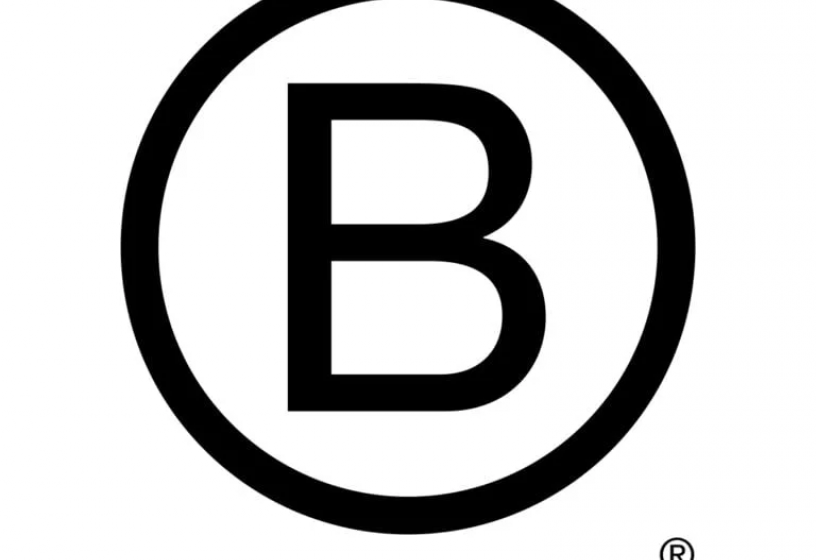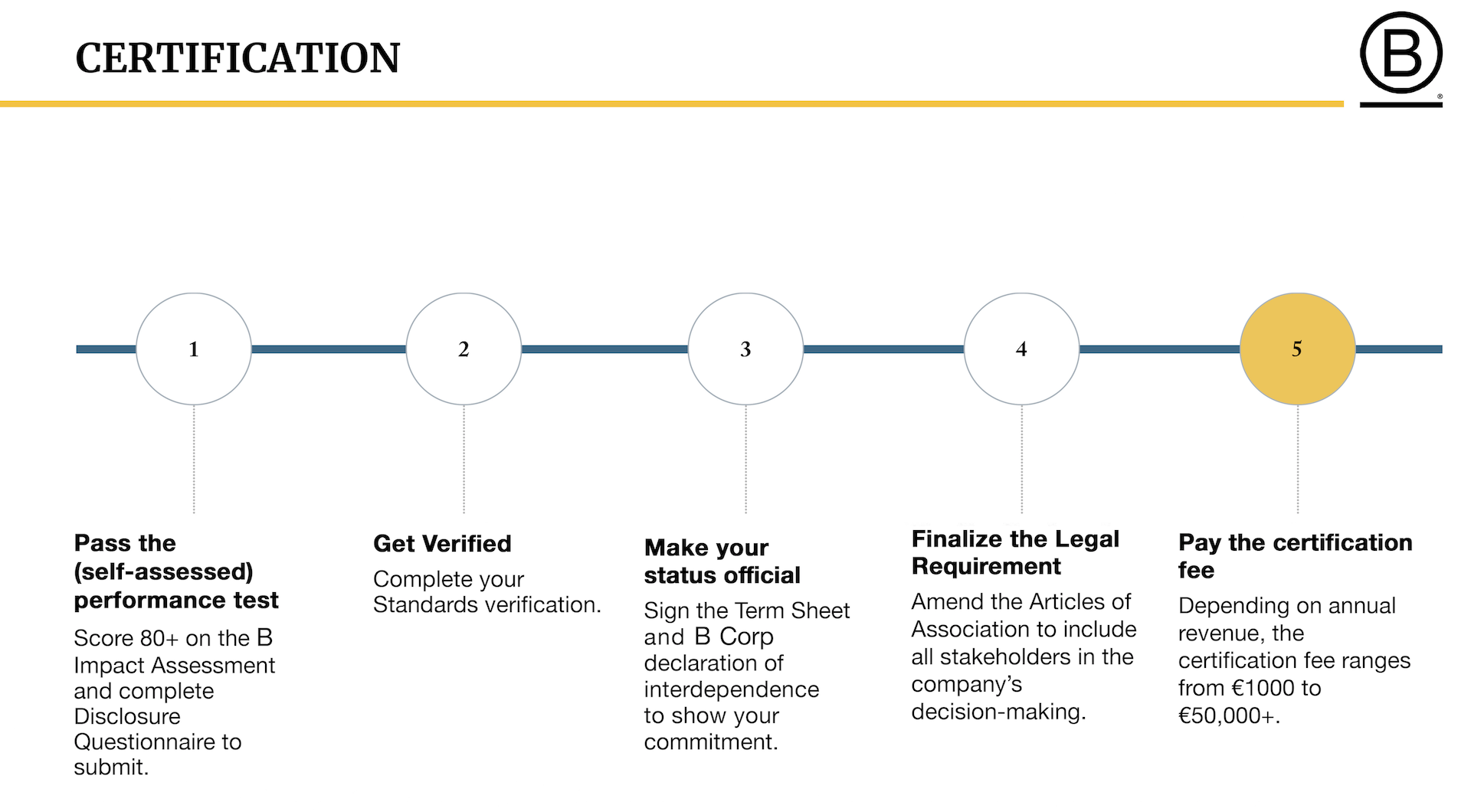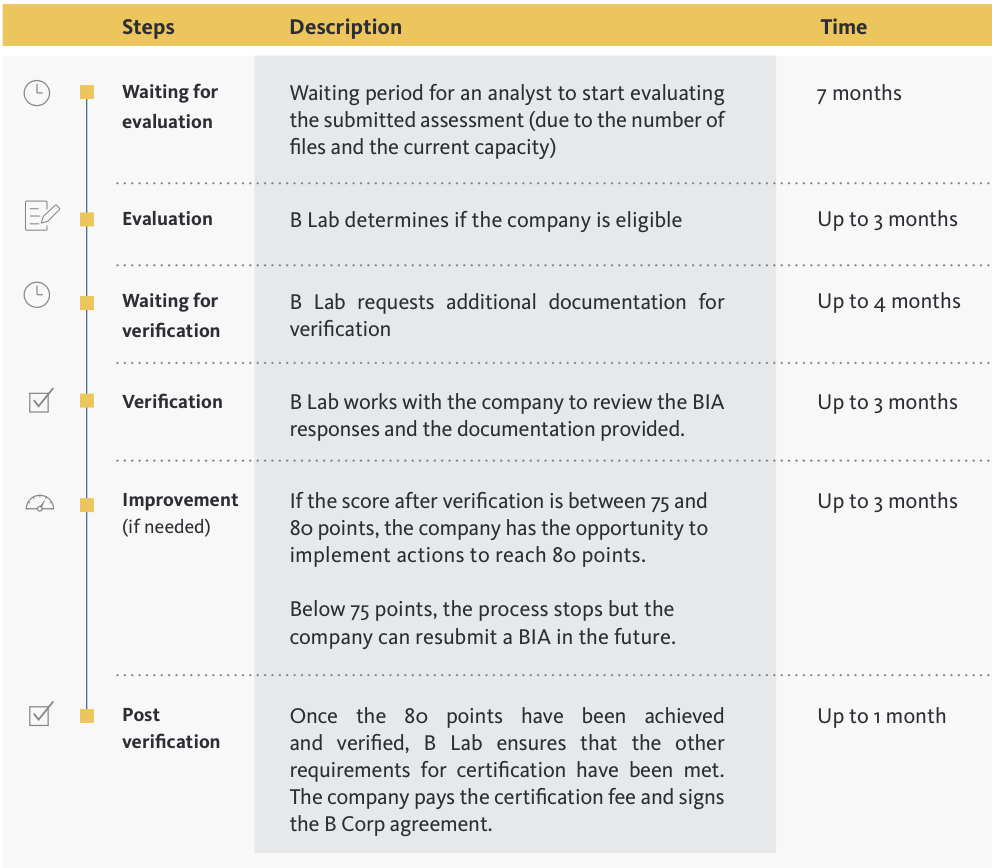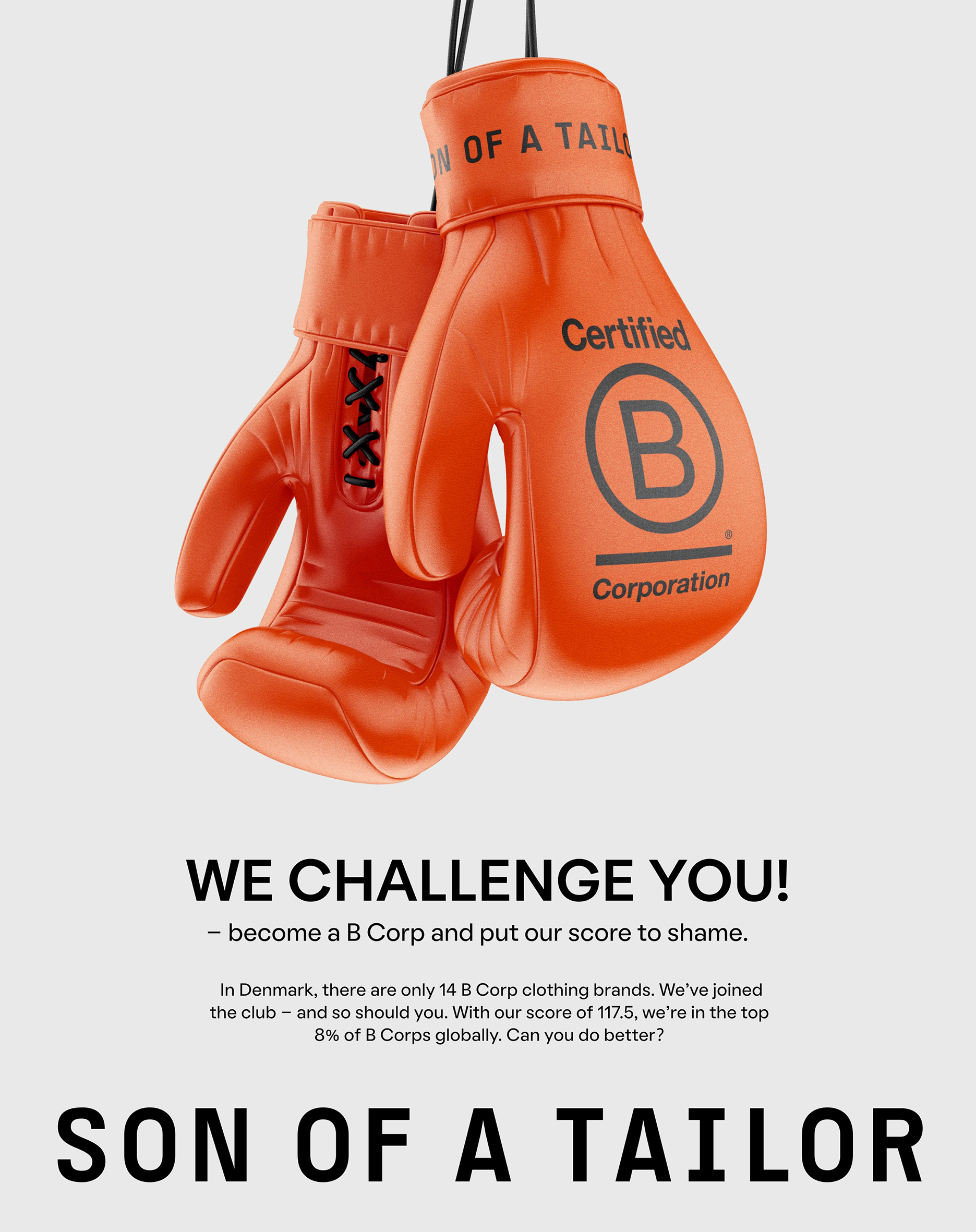How to become a B Corp
Your way to the certification

What does it mean to be a B Corp? What are the steps to become one? Where can you find help? Who needs to be involved in the process? How long does it take? What are the costs? These are all questions you might be asking yourself if you aspire to join to the B Corp community, and to which you are looking for answers before taking the plunge. Let's find out.
A free online-tool, open to all, even without seeking certification
The first step in the process lies in the B Impact Assessment (BIA). This self-assessment tool is free of charge and open to any organization no matter its status (private company, public entity, NGO, etc.). It provides every organization with a concrete assessment based on five pillars linking to your different stakeholders. These are: Governance, Workers, Community, Environment and Customers.
Based on the answers provided and depending on several criteria (sector, size of the company, etc.), the tool generates a score. This score can then be used for several purposes. First, you will need it if you are aiming for the certification. Second, if certification is not on your agenda right now or simply not possible - if you are a non-profit organisation for example - you can still use the tool and its score to see where you stand and how you can improve your sustainability practices.
To get started, you have to create an account and fill in a questionnaire with information about your company. This data allow the tool to define the criteria’s weight on which the evaluation will be based - in B Corp language, the "Drivers". These differ depending on where the organisation operates, the sector of activity and the number of employees. The tool then presents the questions that correspond to your profile out of about one hundred possible combinations.
The BIA's free access might lead to thinking that it is a light version of the application form. Not at all, as it contains more than 200 questions, including a mix of checkboxes and free text, and will offer you the possibility to click on the “submit for certification” once ready. Documentation will then be required to ensure that the answers given can be verified.
You should plan to invest a decent amount of time to get all the questions answered. Some of them involve consultation with people in your organization as they require expertise. This initial survey is only the first step in the certification process. You will then add to it throughout the evaluation period and in discussions with B Lab. The BIA must therefore be taken seriously.
It can then be used as a checklist and includes many features to help you put in place procedures, tools and actions needed to improve impact.

The BIA will provide you with a score. If it exceeds 80, you can submit this result to B Lab should you wish to enter the certification process. If the score is lower, it is a starting point, a status report on which you can base your action plan and improve your CSR strategy. This "80-point cut-off" rule is intended to change in 2024: while some evaluation criteria and the spirit will remain unchanged, the certification will lean towards 10 different impacts areas where companies will have to reach minimum standards. It is also important to point out that it is quite rare to reach the 80 points on the first assessment. Some preliminary work is almost always required before embarking on the certification process. There is no reason to be discouraged by this first score as it should really be seen as a baseline of the work needed.
Towards certification
If you are aiming for certification, the process will involve exchanges between B Lab and your company. B Lab is a non-profit that operates in many countries. It is the organisation that evaluates and issues the renowned certification. Only for-profit companies that have been operational for at least one year are entitled to apply.
Throughout the process, you are put in contact with the B Lab team. Your organisation should plan to free up resources as this is logically a time-consuming exercise. It is recommended that one person is assigned responsibility for the process and for managing the BIA interface. On average, it takes about two years between the opening of the account for self-assessment and the delivery of the certification.
Given the popularity of B Corp and the large number of applications, it should be noted that you will be put on a waiting list of about seven months before B Lab can examine your application for the Benelux region.
On the financial side, the cost of certification varies according to the organisation's revenue and is made up of a fee for submitting the certification application and an annual membership fee.
Changing its articles of association, a legal obligation in the process
Modifying the company articles of association is an essential prerequisite for obtaining the certification. This legal step is both symbolic and very real as it affects the company's purpose, its corporate mission. It is a very strong signal intended by B Corp to ensure the continuity of values no matter which direction the company takes in the future.
The information that needs to be included in the articles of association varies according to the location and legal form of the company. The deadlines within which this requirement must be met also vary according to the size of the company.
B Lab will be able to give you more details depending on your case.

https://app.bimpactassessment.net/get-started
Ongoing improvement
Obtaining the certification is not an end in itself. Every company needs to recertify every three years. It is therefore necessary to continue to work on the five pillars in order to keep on track. In parallel, the BIA standards are also reviewed and updated regularly to ensure that they remain rigorous in the light of ongoing global challenges and regulatory frameworks.
For certified companies, the BIA remains an excellent performance management tool, allowing the definition of objectives and the identification of weaknesses that the company still needs to work on. It is by using this tool for continuous improvement that an organisation will derive the most benefit and have the most impact. Once certified, each company will also be able to benefit from good practices and exchanges with other B Corps in a spirit of mutual support.
Joining the B Corp network, does not only mean obtaining a logo that is affixed to the company's communication tools. It also bears a strong sense of belonging to a committed community. This aspect is underlined by the declaration of interdependence signed at the end of the first certification process. Transparency is also a requirement as the companies' scores are published on the B Corp website and anyone can consult them.

Campaign by the Danish clothing brand Son of a Tailor. Beyond certification, positive collective emulation is a B Corp signature.
Challenges of B Corp certification
Becoming a B Corp sometimes requires a complete rethink of the company's strategy, or at least a re-evaluation and adaptation. A small organisation that does not need to involve many people or departments will be more agile and quicker in making decisions. A multinational company, with a longer and more demanding certification process, will spend more time obtaining the necessary information or adapting processes and policies that are embedded in habits and culture. This being said, and even before you apply for certification, B Lab puts a lot of people on hand to help you, whatever your size or sector.
Impact Business Model
Your organisation will have an easier time achieving certification if it can demonstrate an Impact Business Model (IBM), i.e. a model that helps solve a social, economic or environmental challenge.
A company that has an impact business model is not necessarily B Corp certified, but it will score higher in the BIA. This indicates that advanced practices in terms of reducing negative externalities and/or enhancing positive externalities are already in place. The BIA thus includes questions to define precisely whether or not your company is active in one or more impact business models.
Support in the certification process
It is possible to be accompanied by B Corp specialists during the process. They hold the title of B Leaders which they obtained after a training course offered by B Lab. This training is specially designed for consultants or internal workers within your company. Beneficiating from a B Leader’s support saves time during the relatively long process. Also, some B Leaders agree to dedicate a few hours of their schedule to pro bono work.
To sum up
B Corp certification is in increasing demand. The growth in the number of organisations showing an interest in the process is evidence of a real motivation for companies to adapt their model. However, the path to obtaining the certification is far from quick and easy. It requires questioning of the company's very purpose. Being stamped a B Corp, entails more than just another marketing logo, it reveals the work of a company deeply committed to a sustainable mission.
To be read also in the dossier "B Corp business reinventing capitalism"


